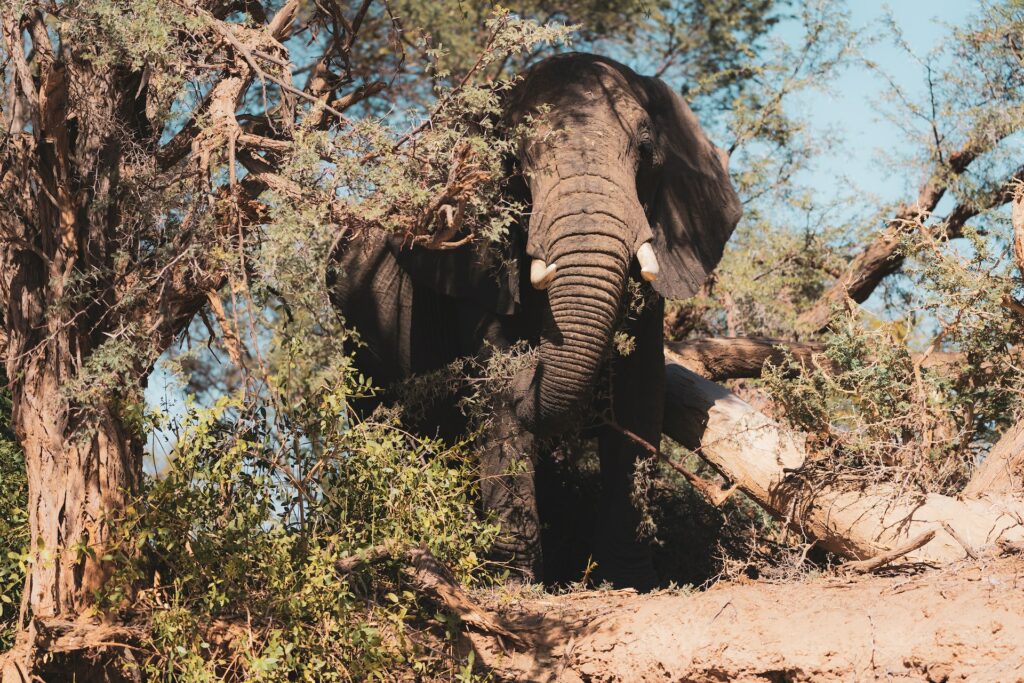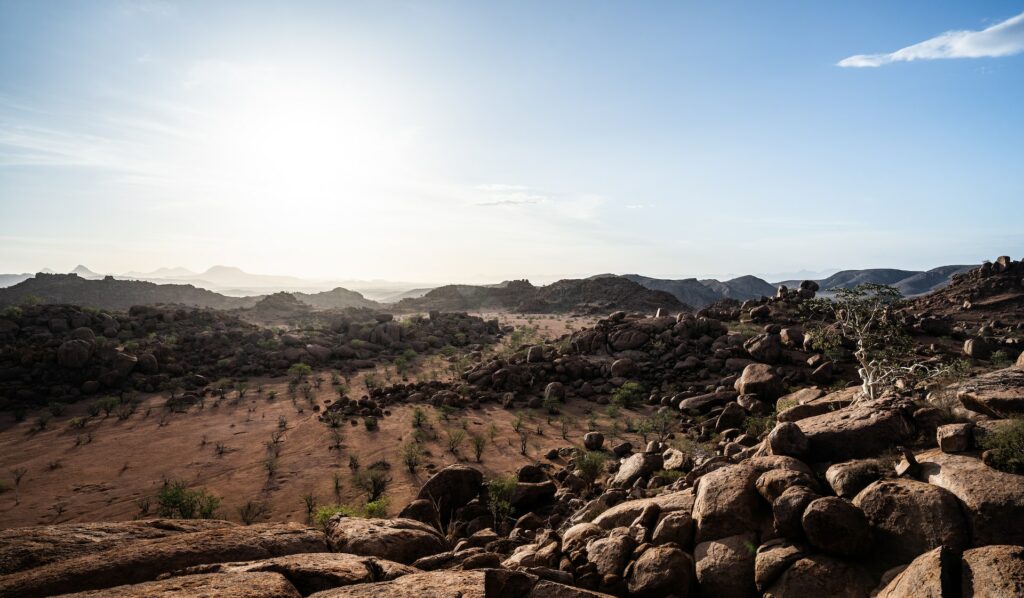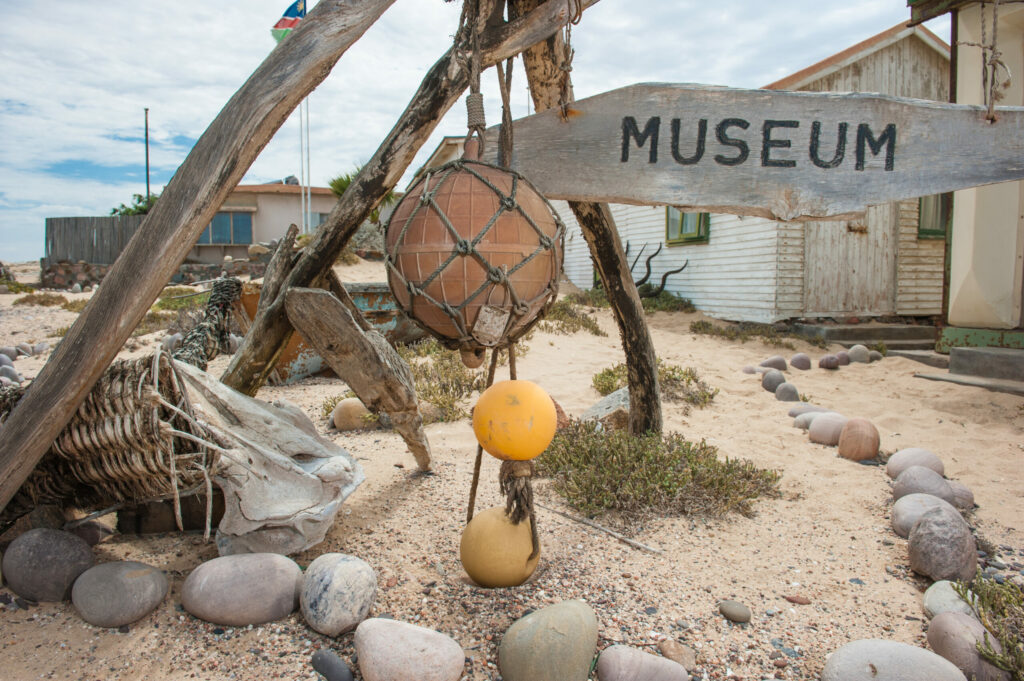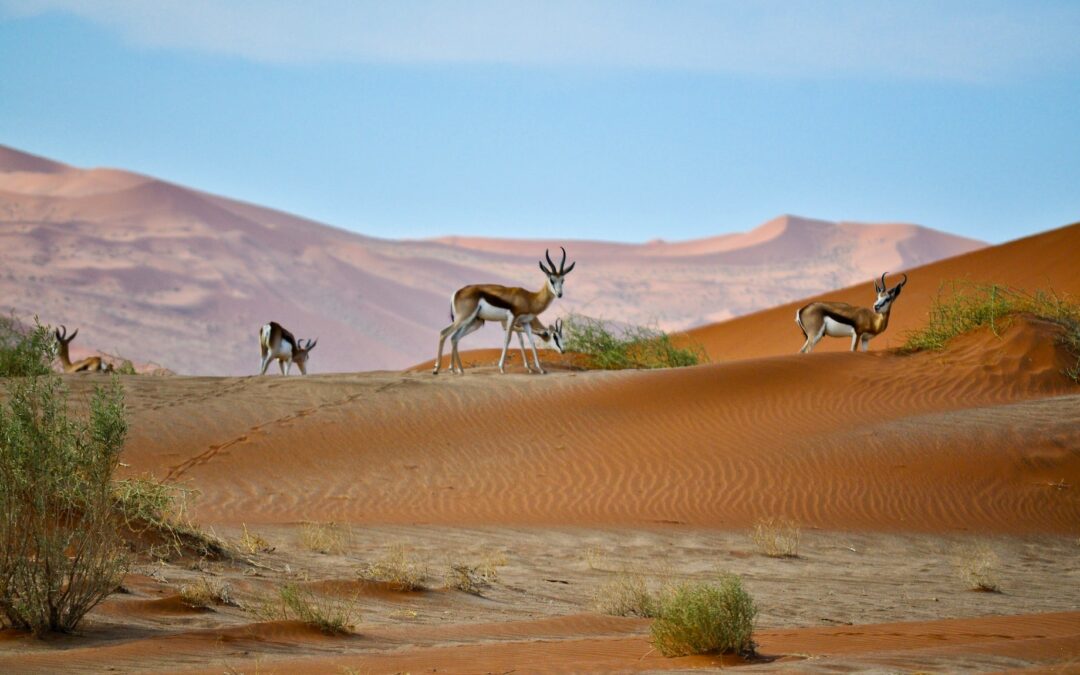Safari adventures in Africa are among the most exhilarating experiences for travelers from around the world. The continent’s vast and diverse landscape provides a beautiful setting for gay safari tours, allowing participants to have meaningful encounters with incredible wildlife and explore untamed wilderness.
Africa’s wildlife, culture, and natural beauty have long attracted adventurers seeking deep and enriching experiences. And for gay travelers, these safari adventures offer the chance to forge meaningful connections, share extraordinary moments, and create lasting memories in a truly immersive environment.
The Magic of African Safaris
An African safari is a unique blend of adventure, exploration, and immersion in the wild. Picture yourself in a 4×4 vehicle, traversing vast savannahs or tracking desert-adapted elephants through arid landscapes. The anticipation of spotting a lioness with her cubs, a tower of giraffes grazing by the horizon, or a leopard silently stalking its prey is both exhilarating and humbling.
Meanwhile, sundowners at dusk bring tranquil moments as you have your drink and watch the African sun paint the sky in warm hues. As day turns to night, you’ll be enchanted by the chorus of nocturnal creatures and the brilliant canopy of stars that light up the African sky. It’s a magical experience that only a fortunate few have the chance to savor firsthand.
Exclusive and Immersive Gay Safari Tours in Namibia
For LGBTQ+ travelers, exclusive gay safari tours in Africa elevate the safari experience to new heights. These exclusive gay tours in Namibia typically offer a meticulously planned itinerary that includes visits to the country’s most iconic national parks and wildlife reserves. You’ll embark on exhilarating game drives led by experienced guides with intimate knowledge of the region’s wildlife and ecosystems. These tours also offer opportunities for cultural immersion, visits to local communities, and interactions with indigenous tribes. You’ll gain insights into Namibia’s diverse cultures and traditions, creating a deeper connection to the land and its people.
Additionally, the tours often feature accommodations that offer both comfort and immersion in the wild — from luxurious safari lodges with panoramic views of the savannah to intimate tented camps that allow you to fall asleep to the sounds of the African night.
Connecting with Like-Minded Travelers
One of the most rewarding aspects of all-inclusive Namibia tour packages with LGBTQ+ tours is the chance to connect with fellow gay travelers and their friends who share their passion with you for adventure and exploration. Whether you’re swapping stories around the campfire or marveling at a mesmerizing sunset together, the bonds formed during these journeys often lead to lasting friendships.
As you traverse the enchanting landscapes of Namibia and witness its astounding wildlife, you’ll find that the camaraderie of your fellow travelers enhances the overall safari experience. It’s a journey that goes beyond the destination itself, creating memories and connections that will stay with you long after the safari ends.
Namibia’s Rich Biodiversity
Namibia’s varied landscapes have given rise to a stunning array of wildlife and ecosystems. From the fascinating adaptations of desert creatures to the vibrant biodiversity of its national parks, Namibia offers a wealth of experiences for nature enthusiasts.
Iconic Wildlife Encounters
Namibia boasts some of Africa’s most sought-after wildlife encounters. Although there’s no guarantee, within its national parks and reserves, you’ll have the chance to spot some of the most extraordinary animals in their natural habitat:
- African Elephants: Namibia’s diverse habitats support both savannah and desert-adapted elephants. Etosha National Park and Damaraland are excellent places to witness these majestic creatures.
- Lions: The big cats roam various regions, with the renowned desert-adapted lions inhabiting the remote Kunene region.
- Leopards: Known for their elusive nature, leopards can be spotted in several national parks, including Etosha.
- Rhinos: Both black and white rhinos are found in Namibia, and conservation efforts have been successful in protecting these endangered species.
- African Buffaloes: Often seen in herds, African buffaloes are a common sight in national parks like Bwabwata and Mudumu.
Namibia, as part of the Gay Safari Tours experience, offers a sanctuary for a captivating array of mammals, including giraffes, zebras, cheetahs, and hyenas. The lush floodplains of the Caprivi Strip beckon participants to embark on enthralling boat safaris, providing opportunities to observe hippos, crocodiles, and a plethora of diverse bird species.
Desert-Adapted Species
Namibia’s deserts are not barren wastelands; they are home to a remarkable variety of desert-adapted species. In the vast dunes of the Namib Desert, you can encounter oryx, springbok, and the elusive brown hyena, all of which have evolved to thrive in this harsh environment.
One of the most iconic desert-adapted species is the desert-adapted elephant. These majestic creatures have learned to survive in the arid landscapes of northwest Namibia, and tracking them in this remote region is a once-in-a-lifetime experience.

In addition to mammals, the desert is also inhabited by a diversity of reptiles, insects, and plants that have evolved unique strategies to endure the extreme conditions. Exploring the resilience and adaptability of these species can be a profound and humbling experience.

Namibia’s Protected Wilderness: National Parks and Conservancies
Namibia is a pioneer in sustainable conservation practices, boasting a network of national parks and conservancies that safeguard its unique ecosystems. As gay travelers, embracing these protected areas allows us to experience the country’s pristine landscapes while contributing to their preservation.
Etosha National Park
Etosha, known as Namibia’s “Place of Mirages,” is a crown jewel in the country’s conservation efforts. The park is home to a vast salt pan and a wealth of wildlife. As you embark on game drives through Etosha, keep your camera ready to capture incredible sightings of elephants, lions, leopards, rhinos, and various antelope species. The park’s waterholes provide great opportunities to observe animal interactions up close.
Namib-Naukluft National Park
Namib-Naukluft National Park is a diverse and captivating wilderness that showcases the wonders of the Namib Desert, including the renowned Sossusvlei. Here, you’ll encounter towering sand dunes, including the iconic Dune 45, which you can climb to witness a breathtaking sunrise. The park also features the hauntingly beautiful Deadvlei, with its ancient camel thorn trees set against a backdrop of colossal dunes. Hiking and photography enthusiasts will find this park a haven of natural beauty.
Skeleton Coast National Park
The enigmatic Skeleton Coast is a remote and untouched wilderness that offers a stark contrast to the desert landscapes of Namibia. This coastal wonderland is named after the countless shipwrecks that dot its unforgiving shores. It’s a place where the relentless power of the Atlantic Ocean meets the starkness of the Namib Desert, creating a dramatic juxtaposition that leaves a lasting impression on those fortunate enough to visit. The Skeleton Coast is also home to unique wildlife, including desert-adapted elephants, and offers opportunities for wilderness safaris.
Wildlife Conservancies
Namibia’s commitment to wildlife conservation extends beyond national parks. Community-based conservancies play a crucial role in preserving natural habitats and supporting local communities. In these conservancies, gay travelers can engage in responsible and sustainable wildlife encounters, often guided by local experts who provide unique insights into the region’s ecology and culture.

History, Culture, and Tribes of Namibia
Namibia’s cultural tapestry is a vibrant mosaic woven from the threads of numerous ethnic groups and a complex history that has shaped the nation. Understanding and respecting these cultures is recommended for travelers to have a meaningful and enriching experience in Namibia.
Rich Historical Background
Namibia’s history is marked by a legacy of colonialism, struggle for independence, and the resilience of its people. It was once known as German South-West Africa and later came under South African rule. The country gained independence in 1990 and is now officially known as the Republic of Namibia.
Diverse Ethnic Groups
Namibia is home to a diverse array of ethnic groups, each with its own language, customs, and traditions. Some of the prominent tribes and communities in Namibia include:
- Ovambo: The largest ethnic group in Namibia, known for their vibrant culture, traditional music, and art forms.
- Himba: The Himba people are famous for their distinctive red ochre body paint, intricate hairstyles, and a semi-nomadic way of life.
- Herero: Known for their distinctive Victorian-era clothing, the Herero people have a rich cultural heritage, including their language and traditional ceremonies.
- Nama: This community has a deep connection to the desert and is known for its unique musical and storytelling traditions.
- San: Often referred to as the Bushmen, the San are some of the oldest inhabitants of Namibia. They have a rich history of hunting and gathering in the desert regions.
Common Cultural Norms and Etiquettes to Keep in Mind in Namibia
While Namibia’s cultures are diverse, there are some common norms and etiquettes that apply in many situations. Being aware of these practices can help ensure respectful interactions:
- Greetings: Greet people with a friendly “hello” (English) or “moro” (in many indigenous languages). A handshake is common, but in some cultures, a slight bow is a sign of respect.
- Dress Modestly: In rural areas and villages, dressing modestly is appreciated. Avoid wearing revealing clothing when visiting such places.
- Ask for Permission: Always seek permission before taking photos of individuals, especially in rural communities. Some people may prefer not to be photographed.
- Respect Elders: Show respect to older individuals by addressing them with appropriate titles like “Mama” or “Oom” (Aunt or Uncle).
- Food Etiquette: If offered food or drink in someone’s home, it’s polite to accept, even if just a small portion. It’s a sign of appreciation.
Exploring Meaningful Encounters: Reflections on Gay Safari Tours
“Take nothing but pictures, leave nothing but footprints, kill nothing but time.”
Your journey into the heart of Africa presents an exciting opportunity to connect with nature, observe remarkable wildlife, and engage with local cultures respectfully and meaningfully. So, embrace the magic of the desert sands, the serenity of the savannahs, and the warmth of Namibia’s people. Cherish the moments, savor the flavors, and capture the beauty of this extraordinary destination.
Namibia’s commitment to conservation and sustainable tourism ensures that the pristine landscapes and wildlife you encounter will be preserved for generations to come. On your gay safari tour in Namibia’s deserts and savannas, remember to travel responsibly, respecting the environment and the communities you encounter. By doing so, you not only enhance your experience but also contribute to preserving this beautiful country.
Whether you’re scaling the towering dunes of Sossusvlei, embarking on thrilling game drives through Etosha National Park, or sharing stories with local tribes around a campfire, your gay safari tours adventure in Namibia promises to be a journey of a lifetime.


Call Us: 305-672-9779